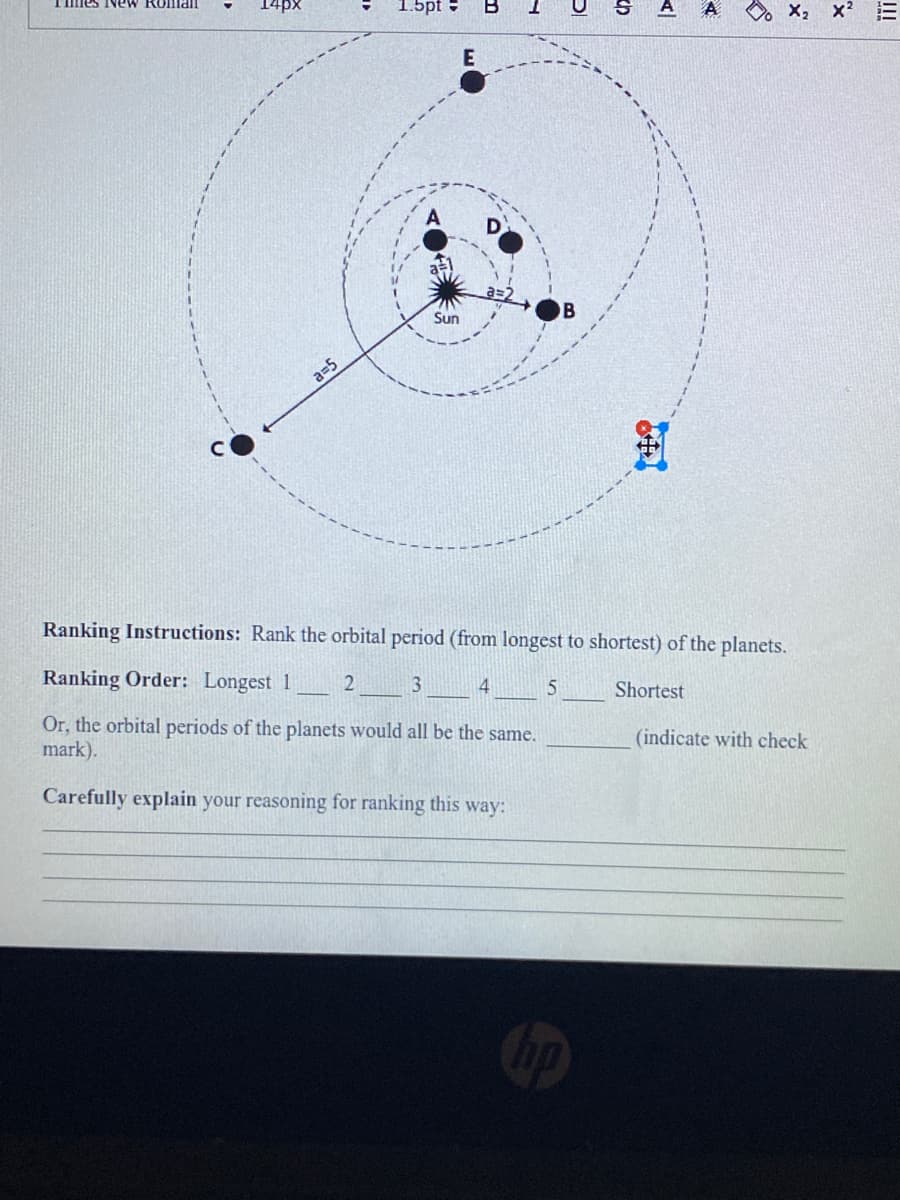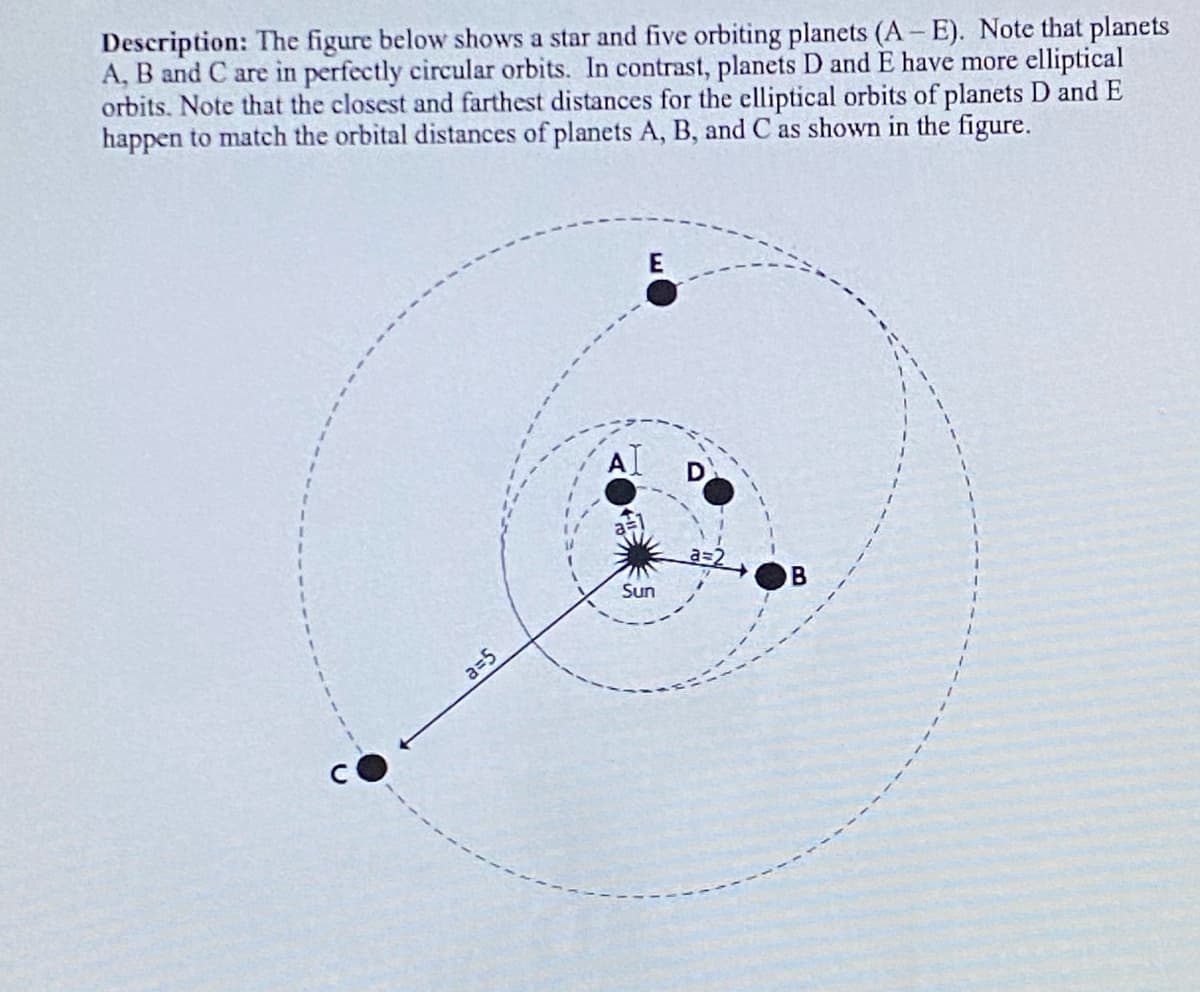D B Sun a=5 Ranking Instructions: Rank the orbital period (from longest to shortest) of the planets. Ranking Order: Longest 1 2 4 Shortest Or, the orbital periods of the planets would all be the same. mark). (indicate with check Carefully explain your reasoning for ranking this way:
D B Sun a=5 Ranking Instructions: Rank the orbital period (from longest to shortest) of the planets. Ranking Order: Longest 1 2 4 Shortest Or, the orbital periods of the planets would all be the same. mark). (indicate with check Carefully explain your reasoning for ranking this way:
Foundations of Astronomy (MindTap Course List)
14th Edition
ISBN:9781337399920
Author:Michael A. Seeds, Dana Backman
Publisher:Michael A. Seeds, Dana Backman
Chapter18: Origin Of The Solar System And Extrasolar Planets
Section: Chapter Questions
Problem 23RQ: Which step(s) listed in the previous question can be eliminated in models that form Jovian planets...
Related questions
Question
How do I answer this part

Transcribed Image Text:Immes NeW Rollman
14px
1.5pt -
A
O X2 x2
E
Sun
B
a=5
Ranking Instructions: Rank the orbital period (from longest to shortest) of the planets.
Ranking Order: Longest 1
3
4
Shortest
Or, the orbital periods of the planets would all be the same.
mark).
(indicate with check
Carefully explain your reasoning for ranking this way:

Transcribed Image Text:Description: The figure below shows a star and five orbiting planets (A-E). Note that planets
A, B and C are in perfectly circular orbits. In contrast, planets D and E have more elliptical
orbits. Note that the closest and farthest distances for the elliptical orbits of planets D and E
happen to match the orbital distances of planets A, B, and C as shown in the figure.
E
Al
a=2
Sun
Expert Solution
This question has been solved!
Explore an expertly crafted, step-by-step solution for a thorough understanding of key concepts.
This is a popular solution!
Trending now
This is a popular solution!
Step by step
Solved in 2 steps

Knowledge Booster
Learn more about
Need a deep-dive on the concept behind this application? Look no further. Learn more about this topic, physics and related others by exploring similar questions and additional content below.Recommended textbooks for you

Foundations of Astronomy (MindTap Course List)
Physics
ISBN:
9781337399920
Author:
Michael A. Seeds, Dana Backman
Publisher:
Cengage Learning

An Introduction to Physical Science
Physics
ISBN:
9781305079137
Author:
James Shipman, Jerry D. Wilson, Charles A. Higgins, Omar Torres
Publisher:
Cengage Learning


Foundations of Astronomy (MindTap Course List)
Physics
ISBN:
9781337399920
Author:
Michael A. Seeds, Dana Backman
Publisher:
Cengage Learning

An Introduction to Physical Science
Physics
ISBN:
9781305079137
Author:
James Shipman, Jerry D. Wilson, Charles A. Higgins, Omar Torres
Publisher:
Cengage Learning


Stars and Galaxies
Physics
ISBN:
9781305120785
Author:
Michael A. Seeds, Dana Backman
Publisher:
Cengage Learning


Stars and Galaxies (MindTap Course List)
Physics
ISBN:
9781337399944
Author:
Michael A. Seeds
Publisher:
Cengage Learning